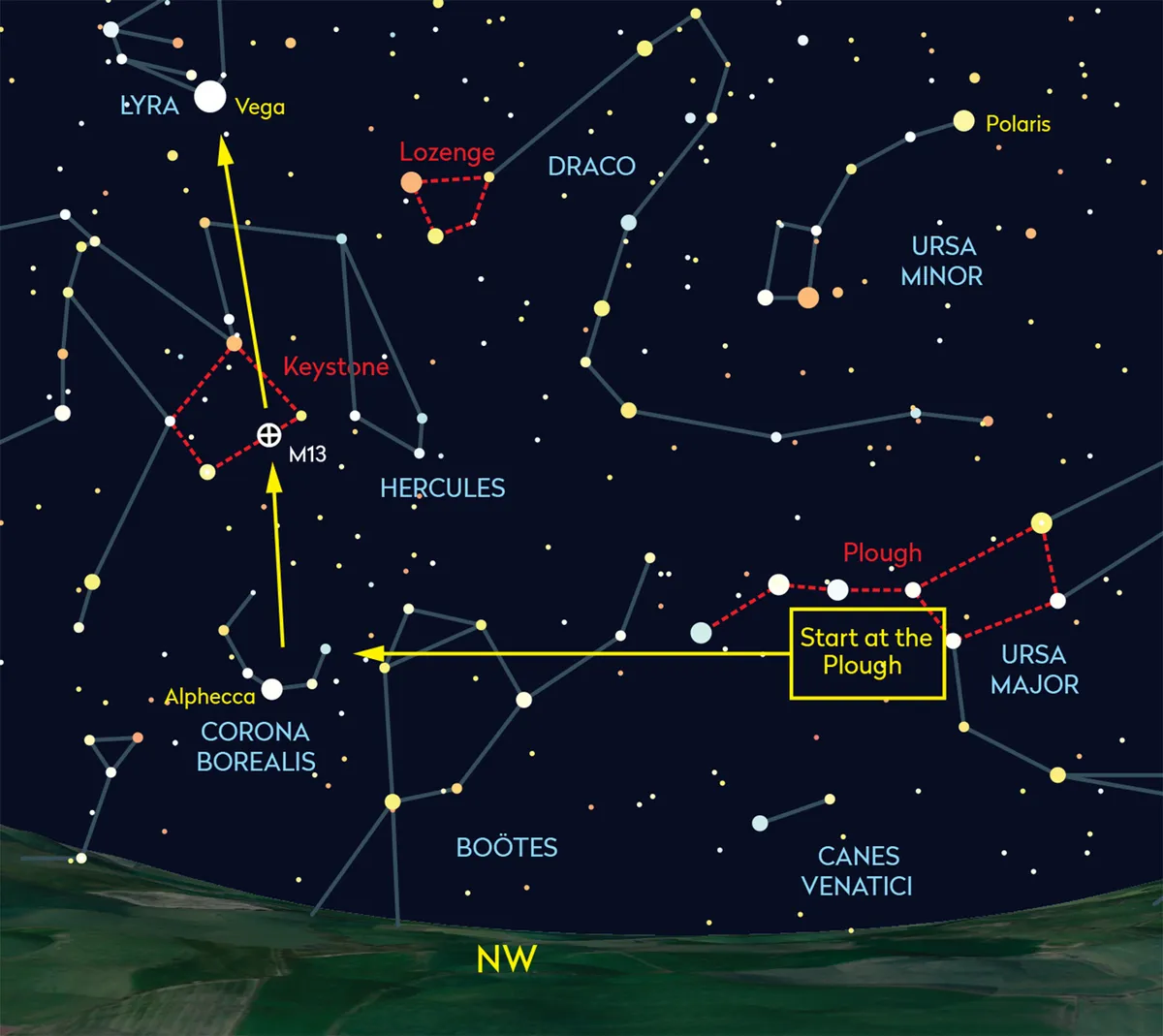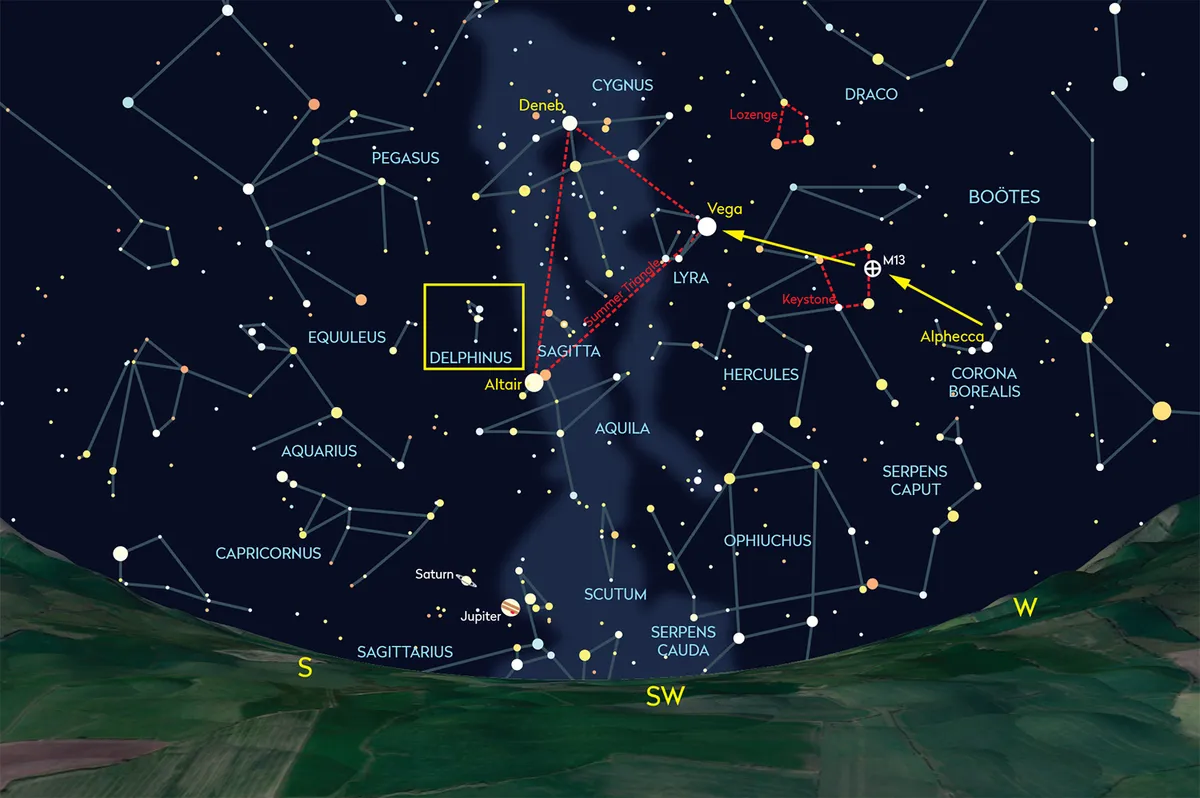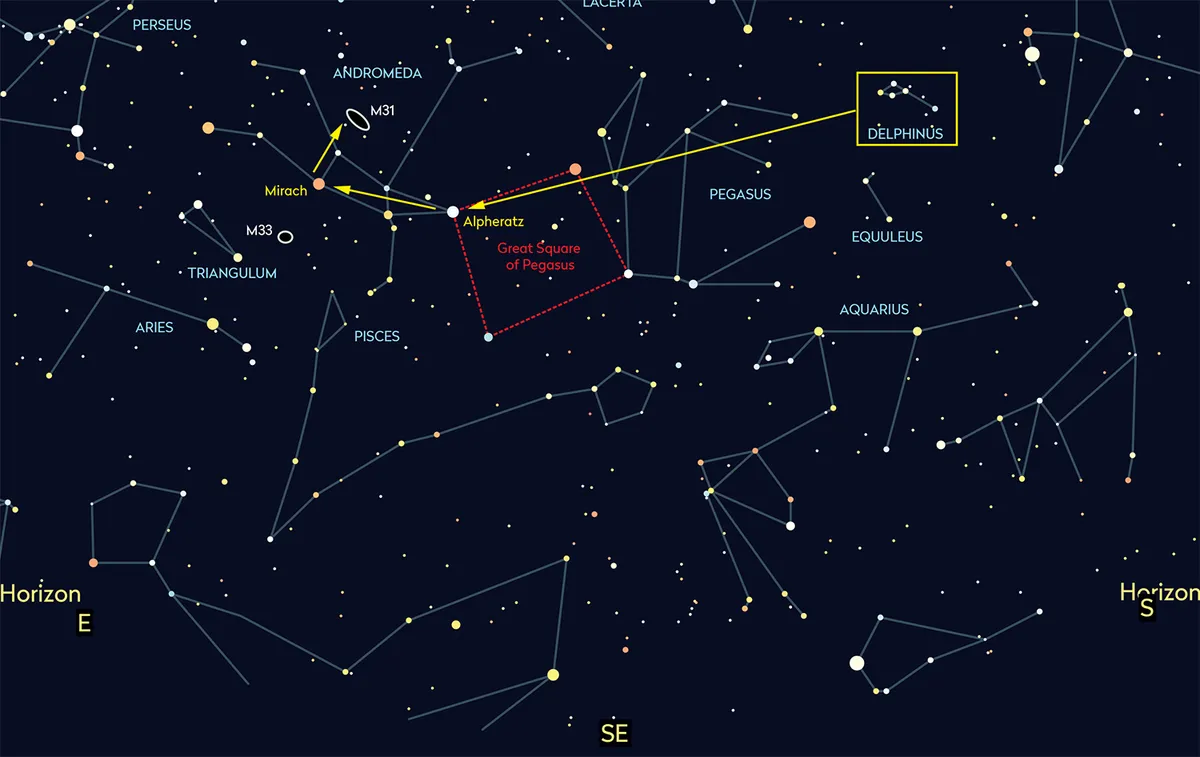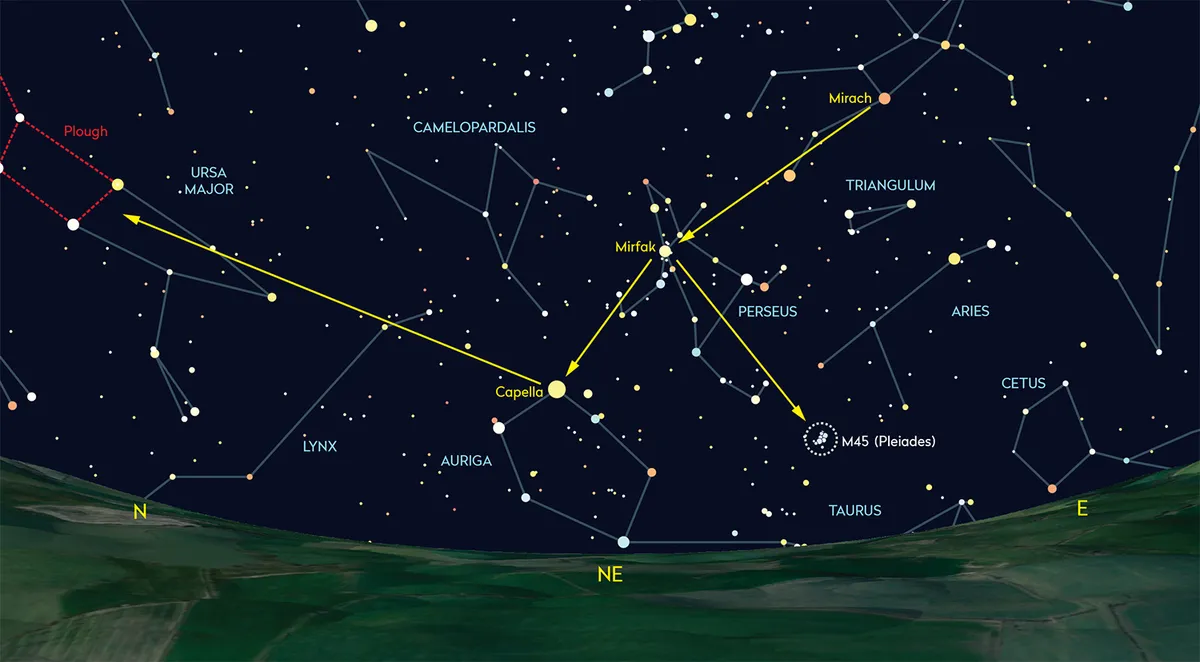As the seasons change and autumn approaches, spring and summer’s stars make way for the stars of the dark-sky season.
It's nice to take a tour of the night sky and see how they change over the course of a year, and autumn's longer nights make it a good time to get outside and looking up.
There are some constellations that appear all year round, and these are known as circumpolar constellations.

If you're reading this on a smartphone or tablet, take it outside with you (don't forget to put it on red light mode to preserve your dark-adapted vision) and keep turning to your left, from your starting point facing northwest, hopping from star to star as you read along.
You’ll see the seasons’ stars change before your eyes.
This constellations guide is accurate for the UK at about 22:00 BST (21:00 UT) at the start of September, and 20:00 BST (19:00 UT) by the month’s end. Enjoy the tour!
For more beginners' astronomy, read our guides of top tips for binocular astronomy and how to find the planets in the night sky
Northwest and west

We’ll start by facing the northwest and locating our first target, the Plough. In September the Plough skirts just above the horizon, near the bottom of the path it appears to trace around Polaris (the North Star). As time goes on, we can watch it turn and gradually swing upwards and towards the east.
Turning towards our left, we’ll see some of the last of spring’s stars. Crossing the dim stars of Boötes, the Herdsman, we reach my favourite small constellation: the C-shaped Corona Borealis, the Northern Crown.
Directly above Alphecca, this constellation’s brightest star, are the dim stars of Hercules.
I often find these tricky, but if you are scanning the skies above Alphecca with a pair of binoculars or a small telescope, you may be able to find the hundreds of thousands of suns of the Great Globular Cluster, M13, about halfway along the line upwards to Vega.
Southwest and south

Now keep turning towards the left and look almost directly overhead. High towards the southwest in Lyra is the star Vega. Then, very high and nearly due south, you’ll find Deneb in Cygnus and Altair below, in Aquila.
It was only a few weeks ago when these, the bright stars of the Summer Triangle, soared high overhead. Now they’re already setting when darkness comes.
Altair and Vega are relatively close to us – only about 16 and 20 lightyears away – but Deneb is about 2,600 lightyears away, so it looks mellower and more subdued than the other two.
From the Summer Triangle, look for the small constellation of Delphinus nearby. Its stars almost look like a small dolphin, with a diamond-shaped head and a long tail, swimming upstream along the Milky Way, which runs through this stretch of sky.
Southeast and east

As we cross into the southeast, we’re in the rising part of the sky, where the newcomers are. Here, we’ll find the Great Square of Pegasus. Its eastern-most star is Alpheratz, which is the brightest star in the constellation of Andromeda, the mythological princess.
Andromeda’s main stars lie more or less parallel to the horizon, like they’re underlining the upper sky. Two star hops east (toward the left) of Alpheratz is Mirach (not to be confused with the Plough’s Merak).
If you have a pair of binoculars, aim them about 7˚ – a bit less than a fist at arm’s length – above Mirach. Hiding 2.5 million lightyears away in that seemingly empty patch is the Andromeda Galaxy, M31. Read our guide on how to see the Andromeda Galaxy.
Under city and suburban skies, it looks like a thumbprint on the sky and might surprise you the first time you spot it. Once you see it, though, you’ll go back again and again.
North and northeast

As we turn towards the northeast, let’s follow the line of Andromeda’s stars downwards and to the left, to Perseus and its brightest star Mirfak. As we continue down that line towards the horizon we can look for the gorgeous yellow star Capella (the brightest in the constellation of Auriga) and the Pleiades Cluster, M45, just a short way above the horizon as September progresses.
It won’t be long before they’re high above us on another freezing January night, along with the rest of the bright winter lights, but September gives us a sneak preview as they make their way higher into the nights.
From here it’s just a short turn back to where we started, the Plough. September is a time of change in the weather and in the skies. We hope you enjoyed this hop around the stars and you’ll be inspired to take a look at these sights this month.
What are your favourite things to see in the autumn night sky? Let us know via email, Facebook, Twitter or Instagram.
Scott Levine is a US naked-eye astronomy enthusiast based in New York’s Hudson Valley. Read his blog at scottastronomy.wordpress.com.
